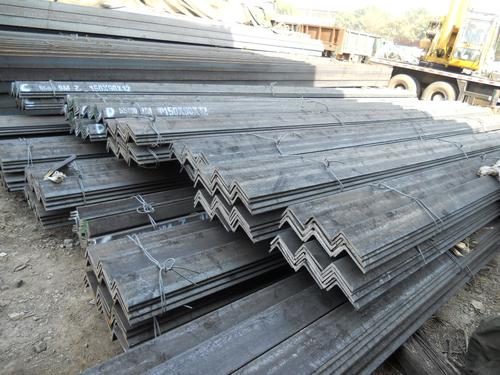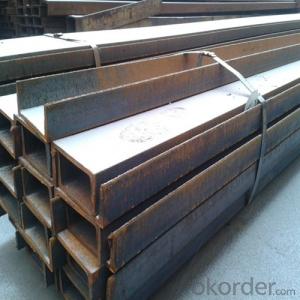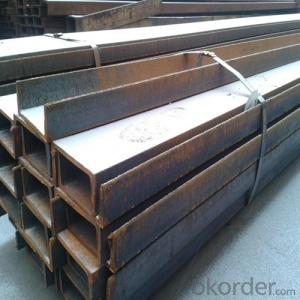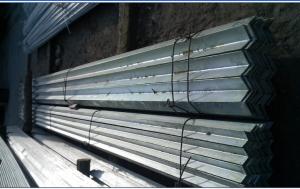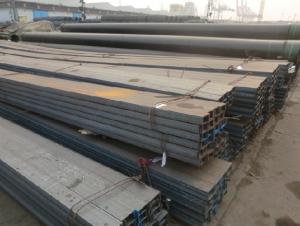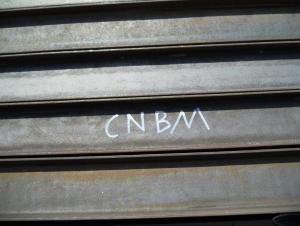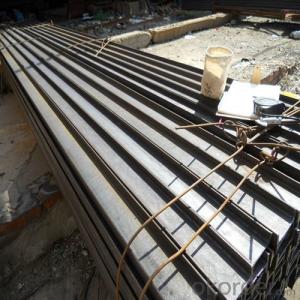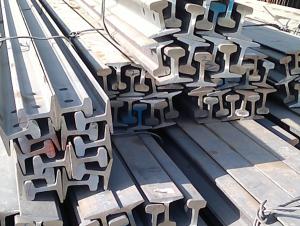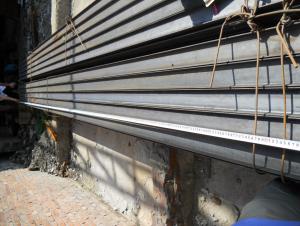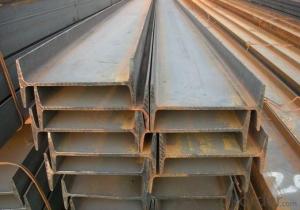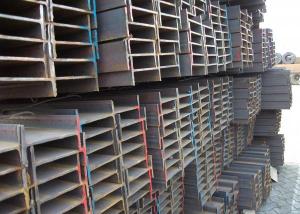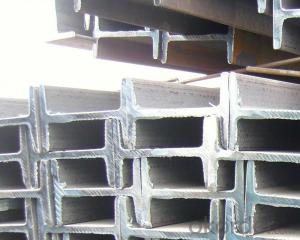HR Steel Unequal Angle Made in China with High Quality and Competitive Prices
- Loading Port:
- Tianjin
- Payment Terms:
- TT or LC
- Min Order Qty:
- 25 m.t.
- Supply Capability:
- 100000 m.t./month
OKorder Service Pledge
OKorder Financial Service
You Might Also Like
Product Description:
OKorder is offering HR Steel Unequal Angle Made in China with High Quality and Competitive Prices at great prices with worldwide shipping. Our supplier is a world-class manufacturer of steel, with our products utilized the world over. OKorder annually supplies products to European, North American and Asian markets. We provide quotations within 24 hours of receiving an inquiry and guarantee competitive prices.
Product Applications:
HR Steel Unequal Angle Made in China with High Quality and Competitive Prices are ideal for structural applications and are widely used in the construction of buildings and bridges, and the manufacturing, petrochemical, and transportation industries.
Product Advantages:
OKorder's HR Steel Unequal Angle Made in China with High Quality and Competitive Prices are durable, strong, and resist corrosion.
Main Product Features:
· Premium quality
· Prompt delivery & seaworthy packing (30 days after receiving deposit)
· Corrosion resistance
· Can be recycled and reused
· Mill test certification
· Professional Service
· Competitive pricing
Packaging & Delivery:
Packaging Detail: products are packed in bundle and then shipped by container or bulk vessel, deformed bar is usually naked strapping delivery, when storing, please pay attention to moisture proof. The performance of rust will produce adverse effect.
Each bundle weight: 2-3MT, or as required
Payment term: TT or L/C
Delivery Detail: within 45 days after received advanced payment or LC.
Label: to be specified by customer, generally, each bundle has 1-2 labels
Trade terms: FOB, CFR, CIF
FAQ:
Q1: Why buy Materials & Equipment from OKorder.com?
A1: All products offered byOKorder.com are carefully selected from China's most reliable manufacturing enterprises. Through its ISO certifications, OKorder.com adheres to the highest standards and a commitment to supply chain safety and customer satisfaction.
Q2: How do we guarantee the quality of our products?
A2: We have established an advanced quality management system which conducts strict quality tests at every step, from raw materials to the final product. At the same time, we provide extensive follow-up service assurances as required.
Q3: How soon can we receive the product after purchase?
A3: Within three days of placing an order, we will begin production. The specific shipping date is dependent upon international and government factors, but is typically 7 to 10 workdays.
Images:
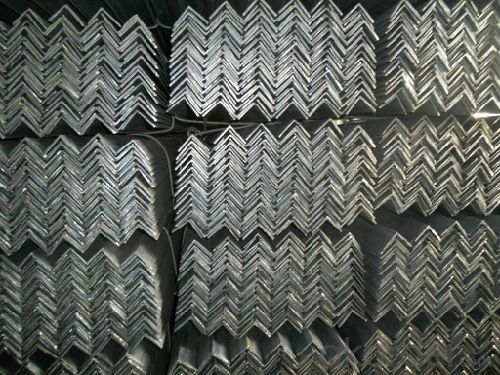
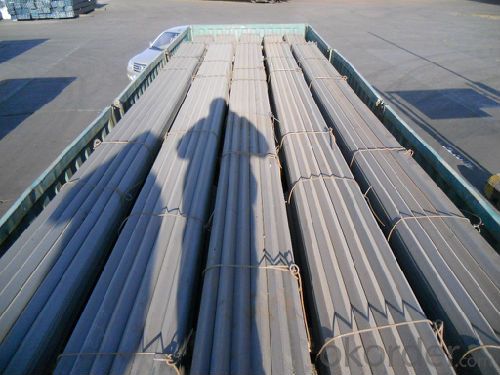
- Q: What are the different types of steel I-beam profiles?
- In construction and engineering projects, a variety of steel I-beam profiles are commonly utilized. Some of the frequently encountered profiles are as follows: 1. W shape: This particular I-beam profile is widely employed due to its wide flanges and straight web. It offers exceptional strength and stability, making it suitable for a broad range of applications. 2. S shape: The S shape I-beam exhibits tapered flanges and a thinner web in comparison to the W shape. It is often employed in scenarios where lighter weight and flexibility are necessary, such as architectural and aesthetic applications. 3. HP shape: The HP shape I-beam, standing for "H-pile," is primarily used in deep foundation applications. Its distinguishing features include wide flanges and a thick web, providing remarkable load-bearing capacity in situations where high strength and stability are critical. 4. M shape: The M shape I-beam, also referred to as a "miscellaneous" shape, is less commonly encountered and typically utilized for specialized applications. It possesses unequal flanges and a thinner web, rendering it suitable for unique structural requirements. 5. L shape: The L shape I-beam, also known as angle iron, is characterized by its 90-degree angle and is commonly employed in smaller-scale structural applications, such as framing and support brackets. These examples represent a mere fraction of the diverse array of steel I-beam profiles that are available. The choice of profile depends on the specific project requirements, encompassing load-bearing capacity, size limitations, and aesthetic considerations.
- Q: What are the different types of steel I-beam connections for lateral stability?
- Lateral stability can be achieved in steel construction through various types of connections for steel I-beams. Some commonly used options are as follows: 1. Welded connections: This type of connection is extensively employed in steel construction. It involves welding the flanges and webs of two I-beams together to establish a strong and rigid connection. Welded connections offer exceptional lateral stability and are commonly utilized in critical structures like high-rise buildings. 2. Bolted connections: By using bolts and nuts, two I-beams can be connected through bolted connections. This type of connection is preferred when the I-beams require easy disassembly or adjustment. Proper design and installation of bolted connections can ensure good lateral stability. 3. Moment connections: Designed to transfer both axial and bending forces between two I-beams, moment connections are more intricate and expensive compared to other connection types. However, they offer excellent lateral stability and are commonly utilized in structures that anticipate significant loads or bending moments. 4. Shear connections: Shear connections facilitate the transfer of shear forces between two I-beams. Typically created using bolts or welds, these connections are relatively straightforward to design and install. When combined with other connection types, shear connections can provide reliable lateral stability. 5. Gusset plate connections: Gusset plate connections involve the use of a plate to connect two I-beams. The plate is commonly welded or bolted to the flanges and webs of the I-beams, enhancing lateral stability. Gusset plate connections are often employed when other connection types are impractical or unfeasible. In conclusion, the selection of a suitable steel I-beam connection for lateral stability depends on various factors, including structural requirements, load conditions, design limitations, and cost considerations. A thorough evaluation of these factors and consultation with a structural engineer is crucial in determining the most appropriate connection type for a specific project.
- Q: How do I connect two lengths of I-beam?
- Just weldingElectrode selection is appropriate, usually with structural steel electrode on line, pay attention to welding quality
- Q: There are no columns in the middle of the workshop of 37 meters span. How much I-beam do I need?
- It's OK to use 60 angles or channel steel as a truss.I-beam is mainly divided into ordinary I-beam, light I-beam and H steel three.Ordinary I-beam, light I-beam flange is variable cross-section, depending on the thickness of the web, the external thin; H steel: HW, HM, HN, HEA, HEB, HEM and so on, the flange of I-beam is a uniform section
- Q: What are the load-bearing capacities of steel I-beams?
- The load-bearing capacities of steel I-beams can vary depending on their size, shape, and material grade. However, on average, steel I-beams can typically support significant loads ranging from a few thousand pounds to several hundred thousand pounds. It is essential to consult engineering tables or professionals to determine the specific load-bearing capacity of a particular steel I-beam.
- Q: Can steel I-beams be used for mezzanines and platforms?
- Steel I-beams are certainly suitable for constructing mezzanines and platforms. They are actually one of the most commonly used and preferred options for these purposes due to their strength and durability. Known for their capability to bear heavy loads and provide structural stability, steel I-beams are perfect for building elevated spaces like mezzanines and platforms. Moreover, they can be easily tailored and manufactured to meet the specific requirements and dimensions of the desired mezzanine or platform design. All in all, steel I-beams provide a dependable and enduring solution for creating robust and safe elevated areas.
- Q: What are the considerations for accessibility and universal design with steel I-beams?
- When considering accessibility and universal design with steel I-beams, several factors need to be taken into account. Firstly, it is important to ensure that the I-beams are designed and installed in a manner that allows for easy access and movement of individuals with disabilities. This may involve incorporating features such as ramps, elevators, or lifts to ensure barrier-free access to different levels or areas supported by the I-beams. Additionally, the dimensions and clearances around the I-beams should be carefully planned to provide sufficient space for individuals using mobility aids, such as wheelchairs or walkers, to maneuver comfortably. This includes considering doorways, corridors, and other passageways supported by the I-beams. Furthermore, it is crucial to select materials and finishes for the I-beams that minimize any potential hazards or obstacles for those with visual impairments. This may involve using contrasting colors or textures to enhance visibility and reduce the risk of tripping or collision. In summary, accessibility and universal design considerations for steel I-beams involve ensuring easy access, sufficient maneuvering space, and minimizing potential hazards or obstacles for individuals with disabilities.
- Q: Can steel I-beams be used for roof trusses?
- Yes, steel I-beams can be used for roof trusses. They are commonly used in commercial and industrial buildings where their strength and load-bearing capacity are advantageous. However, it is important to ensure proper engineering and design considerations are taken into account to meet the specific structural requirements and local building codes.
- Q: Can steel I-beams be used in exterior applications?
- Certainly, the utilization of steel I-beams in outdoor settings is plausible. Due to their robustness and endurance, steel I-beams are commonly employed in the realm of construction, rendering them suitable for exterior purposes that entail load-bearing capabilities. They are frequently utilized in the fabrication of bridges, highways, and industrial edifices, as well as in supporting colossal structures like stadiums and warehouses. Steel I-beams exhibit resilience against inclement weather conditions, encompassing extreme temperatures, formidable winds, and substantial precipitation, thus establishing them as a dependable option for open-air applications. Moreover, steel can be treated with a protective coating or galvanized to fortify its resistance against corrosion, thereby further augmenting its aptitude for exterior deployment.
- Q: Can steel I-beams be used in healthcare or hospital construction?
- Yes, steel I-beams can be and are commonly used in healthcare or hospital construction. They provide structural support and are often used in the framework of the building to withstand heavy loads and ensure the safety and stability of the structure.
Send your message to us
HR Steel Unequal Angle Made in China with High Quality and Competitive Prices
- Loading Port:
- Tianjin
- Payment Terms:
- TT or LC
- Min Order Qty:
- 25 m.t.
- Supply Capability:
- 100000 m.t./month
OKorder Service Pledge
OKorder Financial Service
Similar products
Hot products
Hot Searches
Related keywords



